Comparing Juniper Wood to Other Woods for Durable and Unique Furniture
Photo by Nicole Wilcox on Unsplash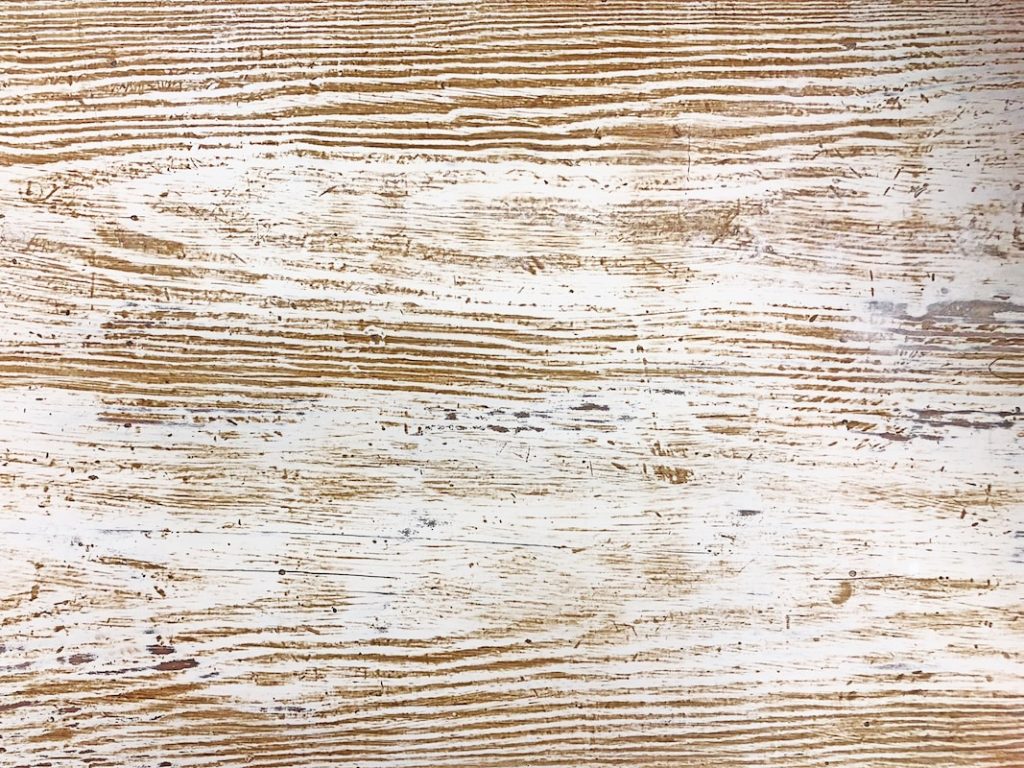
When it comes to furniture wood, there’s nothing quite like juniper. It has a unique look and feels that sets it apart from other woods, making it ideal for those who want pieces of furniture that are both durable and beautiful. But how does juniper compare to the other types of wood available? In this article, we’ll explore what makes juniper such an excellent choice and how it stands up against other woods when used in furniture construction.
Juniper is known for its strength and durability; it’s one of the toughest trees out there! Its dense grain structure allows it to withstand heavy use over time without becoming dull or worn-looking. And with proper care, you can expect your piece of furniture made from juniper to last for decades – even generations! Plus, if you’re looking for something truly unique, juniper offers a variety of colors ranging from pale yellowish browns to deep purples. You won’t find that kind of variation in any other type of wood!
Finally, let’s not forget about price: Juniper is very affordable compared to some more expensive hardwoods, so you don’t have to worry about breaking the bank while still getting quality materials. Whether you’re building new pieces yourself or purchasing pre-made items from a store, juniper is sure to be the perfect fit for whatever project you’ve got in mind.
Definition Of Juniper Wood
Juniper wood is a type of wood that is popularly used in furniture making. It has many characteristics that make it attractive to use for its durability and unique properties. The definition of juniper wood remains the same regardless of where it comes from, as this species is found around the world.
In terms of appearance, juniper wood typically has an even grain and can be light or dark brown depending on the source material. It may also feature red or yellow hues interspersed throughout the board surface. This color variation is one of the most appealing aspects of this type of wood for furniture makers. In addition, it tends to have a delicate aroma when cut which adds another layer of charm to its appeal as well.
When it comes to strength, juniper wood offers excellent resistance to both weathering from fire and warping over time compared with other woods available on the market today. Its tight grain ensures that moisture does not penetrate deep into the fibers while providing enough flexibility so that pieces do not easily break under pressure. As such, those looking for durable furniture pieces will find juniper wood highly suitable for their needs.
Finally, furniture made out of juniper wood carries with it a certain uniqueness due to its distinct look and subtle scent lingering in any space it adorns. Thus, homeowners who want something special should consider investing in items crafted from this particular kind or other species of timber if they wish to add personality to their living areas without compromising on quality and longevity at the same time.
Strengths And Weaknesses of Juniper Wood
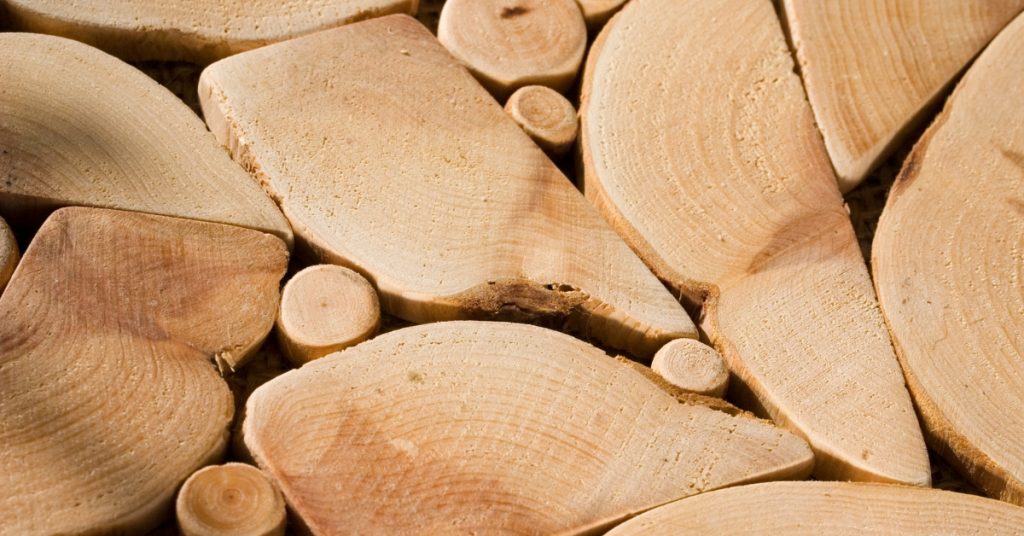
Juniper wood is one of the most sought-after woods for furniture making. It has unique characteristics that make it well-suited for providing durable and unique furniture pieces. Let’s take a look at some of the strengths and weaknesses of juniper wood when used to build beautiful, lasting furnishings.
One of the primary advantages of juniper wood is its strength and durability. This type of wood resists splitting, cracking, or warping over time, making it ideal for creating furniture pieces that will last long into the future. The coloration of juniper can range from light yellowish-brown tones to deep reds and purples that are sure to be eye-catching in any room design. In addition, this type of wood offers excellent staining capabilities which allow you to create custom colors that would enhance any décor scheme.
A drawback to using juniper wood lies in its cost compared to other types of lumber available on the market today. Also, because it is a softer variety than other hardwoods such as oak or maple, care must be taken when working with it during the furniture-making process. To ensure proper adhesion between joints, glue should be applied liberally; otherwise, there may be problems down the road with construction integrity if not done correctly. Lastly, due to its softness and porosity nature, extra caution should be taken when cleaning this type of furniture – certain cleaners could damage its surface finish unless specifically designed for use on wooden surfaces like juniper wood.
In summary, juniper is an excellent choice for crafting durable and aesthetically pleasing pieces that are both resilient and timeless in their beauty. Its natural hues offer great variation while still being able to withstand wear and tear over time without sacrificing visual appeal. However, careful attention must be paid during manufacturing processes as well as maintenance procedures so that your final product remains unscathed by potential mishaps along the way.
Other Alternatives to Juniper Wood
Sometimes, you may be looking for a wood to use in your furniture projects that is different from the typical hardwoods. Juniper is certainly one of those woods, but if it doesn’t quite fit the bill there are other alternatives available. Each type of wood has its unique characteristics and provides something special when used in furniture projects.
To help envision these possibilities, consider the following 5-item list:
- Oak: A classic choice for furniture due to its durability and strength. It’s also known for having interesting grain patterns and colors.
- Cherry: This wood has a deep reddish hue with hints of yellow or purple depending on how it’s stained or finished. Its smooth texture makes it perfect for fine furniture pieces such as tables and chairs.
- Walnut: Has an attractive dark brown color with distinctive streaks of black throughout the grain pattern. It’s often used in high-end furniture due to its luxurious look and feel.
- Maple: Known for being strong yet lightweight, making it ideal for heavier pieces like dressers and armoires. The tight grain pattern gives this wood a clean finish that can add sophistication to any room decor.
- Teak: An extremely durable tropical hardwood with natural oils that make it resistant to insects, rot, and decay. Although it requires more maintenance than other types of wood, teak adds a timeless elegance to furniture designs that will last for years to come.
When selecting alternative woods for your furniture project remember each option offers something special; so take some time researching before deciding what works best for you! With careful consideration, you’ll be able to find the right combination of beauty and utility which will bring out the uniqueness of your piece while still holding up against wear over time.
Popularity Of Juniper Wood
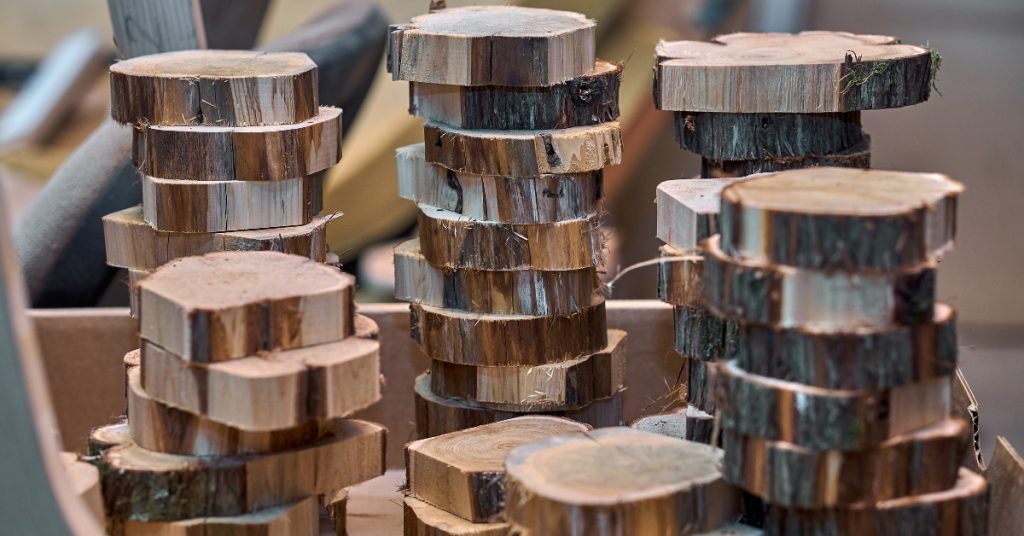
Juniper wood is becoming increasingly popular for furniture making. Its unique color and grain pattern make it a great choice for those seeking something different from the standard woods used in furniture production. It’s also exceptionally durable, meaning that pieces made with juniper can last many years if properly cared for. This makes it an ideal material to use when constructing long-lasting, beautiful furniture pieces.
Not only does juniper offer a distinct look and feel, but its affordability has helped it become more widely used as well. While some rarer or exotic woods may require purchasing special permits or paying extra fees, juniper is typically available at reasonable prices due to its abundance on the market. You won’t have to break the bank just to get your hands on this versatile wood type!
It’s no surprise then that juniper wood is gaining traction among professional furniture makers and hobbyists alike. With its warm hues ranging from light yellowish browns to deep purples, there are plenty of options to choose from when creating exquisite custom works of art. Even better, you can pair these colors with other materials such as metal or glass for even greater visual appeal.
No matter what kind of project you’re working on, juniper should be considered given its impressive range of uses and qualities. From being affordable and easy to work with to providing strength and durability over time; this particular wood will help bring any piece of furniture to life!
Comparing the Durability Of Wood species
When comparing wood for furniture durability, strength, and longevity testing is key. How strong wood is against impacts or wear and tear? Is it naturally resistant to splitting, cracking, or warping? And what kind of hardness does the wood have when tested? All these questions help us determine which type of wood will stand up best over time.
| Wood Type | Strength Analysis | Hardness Test Scores (Janka) |
| Juniper | Very Good | 1,190 |
| Oak | Excellent | 1290 |
| Pine | Moderate | 870 |
| Cherry | Good | 950 |
Let’s take a look at how different types of woods rate our criteria. Juniper stands out as having very good strength analysis scores in comparison to other popular materials used in furniture such as oak, pine, and cherry. Its Janka hardness test score comes close to that of oak but falls just short at 1190 pounds-force instead of 1290 pounds-force like oak. Despite its lower score, however, juniper still offers excellent impact resistance for everyday use due to its natural stability and high-density cells.
Pine on the other hand has moderate strength analysis scores but is much softer than both juniper and oak with an 870 pound-force rating on the Janka scale. This makes it less durable than either juniper or oak even though it may be cheaper upfront. While pine can work well for certain pieces of furniture if cared for properly, it should not be mistaken for a more resilient hardwood material like juniper or oak.
Cherry rates highly amongst all three kinds of wood in terms of strength analysis and holds up better overall compared to junipers and pine given its higher Janka rating at 950 pound-force. However when looking long term, neither cherry nor pine holds up quite as well as juniper or oak do under regular use conditions; making them less desirable choices for pieces intended to last generations rather than years alone.
In summary, each type of wood provides unique characteristics that can make it suitable depending on the application; but ultimately when choosing between materials based solely on their durability properties, juniper along with oak are clear front runners while pine and cherry are suitable alternatives only if taken into proper consideration beforehand.
Pros And Cons for Different Types Of Woods
Photo by Lukas Blazek on Unsplash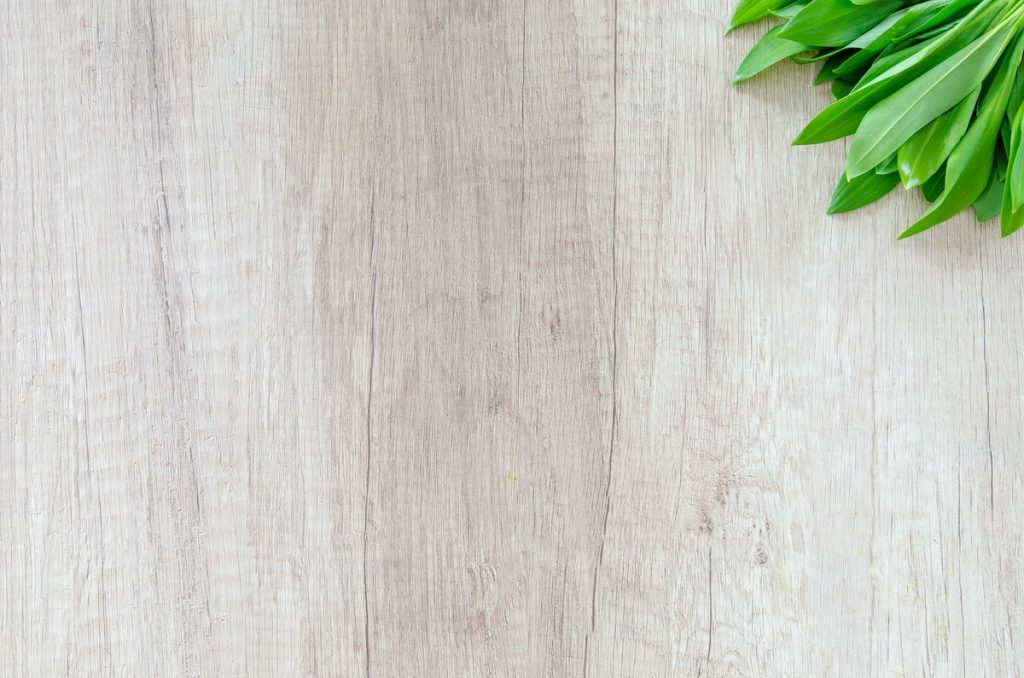
Juniper wood is a great option for furniture because of its durability and unique styles. When comparing this type of wood to other woods, it is important to consider the cost comparison, environmental impact, grain patterns, and overall look and feel.
When looking at the durability comparison between juniper wood and other woods, we can see that juniper stands out as exceptionally durable and hardy. It resists rotting better than many other types of wood while also providing more resistance against water damage. This means that furniture made with juniper will last much longer than those made from softer materials such as pine or oak. The strength of the wood makes it ideal for creating one-of-a-kind pieces that stand up well over time.
The cost comparison between different woods should also be taken into consideration when selecting furniture material. Juniper tends to be slightly pricier than most other types of wood due to its increased durability; however, in the long run, it will save money by not having to replace items frequently like you would if you were using cheaper varieties. Additionally, since juniper has a distinct pattern that gives each piece an individual character, there’s no need to spend extra on decorative accents or treatments – saving money even further!
When discussing environmental impact, juniper is a great choice as it grows quickly and can easily regrow after being harvested. Its fast growth rate means that trees are replanted faster than they are destroyed so there isn’t any negative impact on the environment caused by timber harvesting practices associated with this species of tree. Furthermore, since these trees don’t require intensive maintenance or care once established in an area they have little effect on their surroundings making them perfect choices for sustainable building projects.
Overall, selecting juniper wood for your furniture needs provides a strong yet affordable solution that won’t harm the environment nor leave your wallet empty! Its distinctive grain patterns and natural beauty combined with its extreme durability compared to other materials make it a wise decision for anyone seeking something truly special for their home décor needs.
Cost Comparison for Various kinds of wood
When it comes to cost comparison for various kinds of wood, there’s no one-size-fits-all answer. The price of wood depends on several factors such as the type and quality of wood, availability, demand, and how much effort goes into harvesting and processing it. Juniper is unique in that it doesn’t require any special treatment or finishing due to its naturally hardy nature; this makes it an ideal choice when budgeting for durable furniture construction.
When comparing different types of wood costs, juniper ranks somewhere near the top among other popularly used woods like oak, maple, and walnut. A rough estimate would be about $4 per board foot for juniper versus around $6 for oak or walnut. However, if you are looking for longer-lasting furniture with a unique look then investing more upfront may be worth your while. For example, Brazilian cherry can range from $7-$16 a board foot but will last up to four times longer than most other common varieties.
For those trying to save some money without compromising too much on quality and durability, mahogany offers great value at just over $3 per board foot making it one of the cheaper options available. Pine is also another good option when considering cost savings as well as having enough strength to handle heavier loads; however, pine won’t provide the same level of longevity compared to harder species like juniper or teak which come at higher prices but offer greater protection against wear and tear over time.
No matter what kind of wood you decide to use in constructing furniture pieces, make sure you factor in both short-term expenses as well as long-term maintenance requirements before committing so you get the best bang for your buck!
Design Considerations for Furniture Making
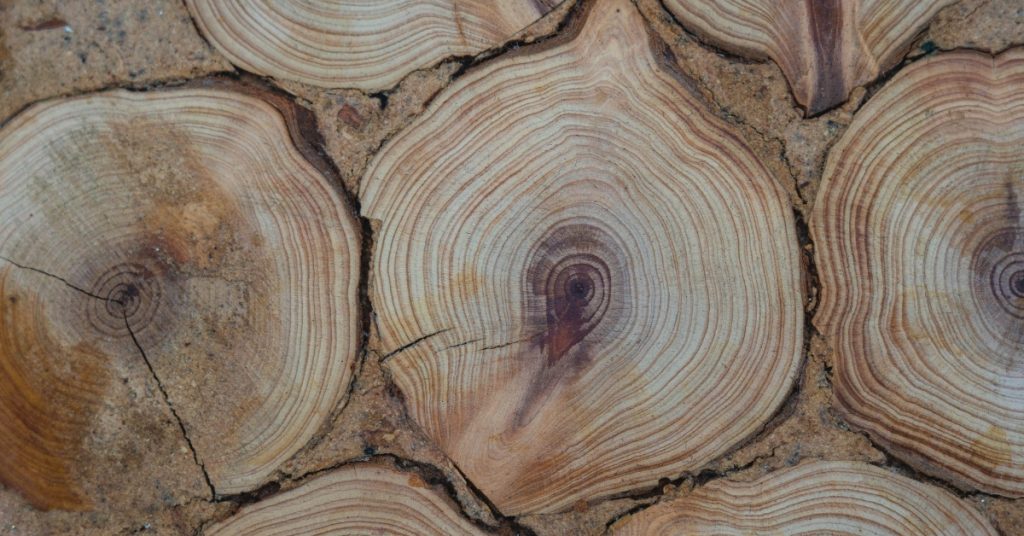
When it comes to designing furniture, there are a variety of considerations that must be weighed. First and foremost is the selection of wood type; different woods have unique properties which can lend themselves to certain projects depending on their grain patterns, color variations, strength, etc. Juniper wood makes an excellent choice for those seeking something both durable and unique in design. Its interesting grain pattern ensures that each piece will stand out from whatever other furniture may exist in a room.
Another important factor when selecting materials for a furniture project is considering the style you wish to achieve. Depending on your desired result, juniper wood can be found in two main varieties: straight or twisted grains with yellow-white or reddish-brown hues respectively. Both offer beautiful options but one should carefully select what best suits their project requirements.
In addition to choosing the right material, craftsmanship quality should also not be underestimated when creating any sort of furniture item. A combination of skillful workmanship and precise joinery techniques is essential for producing high-quality pieces capable of lasting through daily use and wear over time. Utilizing juniper as part of these processes helps ensure an aesthetically pleasing product that stands up against even the most rigorous demands associated with furniture making.
Overall, juniper wood offers many advantages when it comes to constructing practical yet stylish furnishings due to its strong construction qualities as well as its visually appealing characteristics like its grain pattern and colors available. For anyone looking to create long-lasting pieces with an outstanding aesthetic appeal then this particular hardwood is worth consideration – no matter what kind of project they’re tackling!
Maintenance Requirements for Different Types Of Woods
Maintaining wood furniture is essential to preserve its beauty and longevity. Different types of wood require different levels of maintenance, from light cleaning to complete refinishing. Understanding the maintenance requirements for each type of wood will help you select the best option for your needs.
Juniper wood requires minimal care for daily upkeep. Dust or vacuum regularly with a soft brush attachment to keep it looking fresh. Clean any spills immediately with a damp cloth; do not use abrasive products on the juniper as this can cause damage to the surface finish. Additionally, occasional polishing with an appropriate cleaner will ensure that your Juniper piece retains its shine over time.
For added protection against water rings, scratches, and fading due to sunlight exposure, consider applying a protective coating such as wax or polyurethane sealant once every few months. This should be done by manufacturer instructions, if available. If you need more intensive restoration work on your Juniper pieces, consult a professional who specializes in wood conservation or furniture repair services.
Other hardwoods are also fairly low-maintenance but may require periodic refinishing depending on their condition and the level of wear and tear they have endured since purchase. Regular dusting plus regular application of protective coatings like oil or varnish helps maintain these surfaces in top condition while preserving their natural character and grain patterns intact. For deep cleaning jobs involving lots of dirt buildup, specialized wood cleaners may be used according to product directions – always test first in an inconspicuous area before using these products widely across the entire surface area of your furnishings. Allowing experienced professionals to handle larger-scale repairs and restorations guarantees superior quality results which last longer than DIY attempts at home renovation projects involving wooden materials/furniture pieces.
Overall, proper hygiene practices coupled with preventive measures go hand in hand when caring for wooden items around the house regardless of species – ensuring maximum durability and lasting appeal throughout periods of enjoyment!
Finishing Techniques for Wooden Furniture
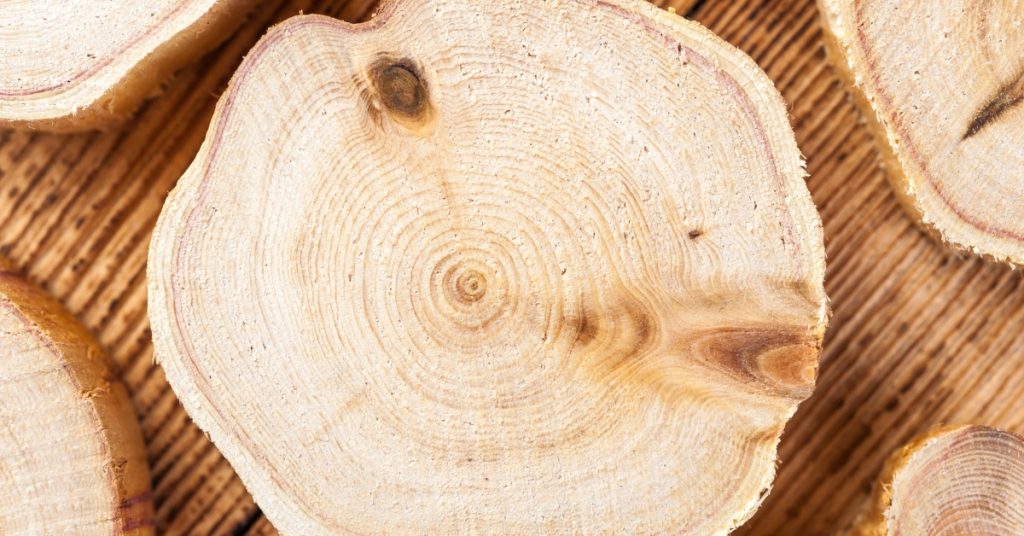
Once you have chosen the type of wood for your furniture, it’s important to know how to finish the piece. Different kinds of wood require different finishing techniques to protect and enhance their natural beauty over time. Wood staining is a popular way to colorize unfinished wooden surfaces while still allowing the grain pattern and texture to show through. Wood varnishing adds extra protection against wear and tear as well as water damage, and can also add a glossy or matte sheen depending on preference. For an even more luxurious look, consider applying a layer of wood polishing wax which will give off a brilliant shine that won’t dull easily with age.
Wood sealing is another technique used by professionals when working with the most common types of woods like cherry, walnut, oak, and mahogany. It provides additional protection from moisture absorption and prevents cracking or splitting due to sudden temperature changes. Lacquered finishes are often applied after sealing for added durability, glossiness, and depth of luster. The combination of these two processes creates one of the strongest protective layers available for high-end furniture pieces that need to last many years without any major maintenance requirements.
When selecting the best finishing technique for your furniture project, always keep in mind both practicality and aesthetics – especially if you plan on using juniper wood which has unique characteristics compared to other traditional hardwoods. In addition to being very durable, juniper offers beautiful colors and patterns which should be taken advantage of during their preservation process so they remain vibrant throughout future generations’ usage!
Impact On the Environment from Choosing Different Types Of Woods
When it comes to selecting the perfect wood for your furniture, you should consider not only its aesthetic beauty and durability but also how using a particular type of wood can affect our environment.
Using sustainable lumber is one way we can ensure that forests are managed with healthy forestry practices which promote renewable resources. Green-certified woods such as juniper provide an eco-friendly option that helps reduce carbon emissions and decrease damage to delicate ecosystems. When choosing juniper or any other wood product, make sure it is certified by organizations like the Forest Stewardship Council (FSC) and Sustainable Forestry Initiative (SFI). These two certifications guarantee that all products are harvested responsibly from well-managed forests.
Below is a 4-item bullet point list of what to look out for when purchasing wooden furniture:
- Make sure the timber used has been sustainably sourced
- Choose woods certified by FSC or SFI whenever possible
- Consider materials made from recycled wood fibers instead of virgin sources
- Look into alternative options such as bamboo or metal if those fit better with your interior design scheme
To minimize environmental impacts caused by harvesting trees, buying wooden furniture made from reclaimed salvaged timbers – like post-consumer plastic composites – is always recommended. Also using formaldehyde-free glues in firewood for construction will help further mitigate negative effects on air quality due to the off-gassing of volatile organic compounds (VOCs).
By making conscious decisions about where we source our materials and investing in green initiatives, we can create beautiful pieces of furniture without compromising our planet’s health. Through thoughtful research and understanding the value of preserving natural resources, everyone can contribute towards creating a more sustainable future.
Finding Quality Craftsmen
When searching for quality craftsmen to create durable and unique furniture pieces out of juniper wood, it’s important to find professional woodworkers who have the skill set needed. Woodworking skills such as expert wood carving, custom woodworking, and other related talents can take time to master – and experienced professionals are typically required to produce high-quality results. Therefore, when looking for skilled furniture makers capable of working with juniper wood, individuals should be sure to seek out those that possess extensive knowledge about carpentry techniques as well as proper finishing methods used on this type of material.
It is also essential to ensure that any potential craftspeople have a portfolio or display of past projects they’ve completed which highlights their specific experience with juniper woods; this will help determine if they’re suited for the job at hand. Additionally, anyone considering hiring a professional should ask questions regarding their work process and timeline expectations so there aren’t any surprises down the line. This allows both parties to understand what needs to be done and how long it’ll take before completion.
Finally, make sure there is an understanding between everyone involved regarding payment terms and conditions before beginning the project. It is highly recommended that customers get everything in writing so all details are clear from the start; this helps avoid confusion later on during the construction or installation phases. With these steps taken care of beforehand, finding quality craftsmen who can bring your vision into reality using juniper wood won’t be hard at all!
Selecting The Right Color and Grain Patterns
When selecting the right wood for your furniture, it’s important to consider both color and grain patterns. The wood grain is determined by the species of tree used and can vary greatly in terms of pattern type. Each type has its unique look that can range from tight swirls to wide open waves depending on the species. In addition, different types of woods offer a variety of colors ranging from light brown to dark red hues.
To make sure you’re getting the desired look for your furniture piece, it’s important to pay close attention when comparing various grain types and color palettes. Juniper wood offers a wide selection of grains and colors that are perfect for any project. Its most common grain type is straight with occasional small knots or burls which creates an interesting texture. It also features several shades of reddish-brown tones as well as light yellow hue variations.
When choosing between different colored juniper woods, there are two main factors to consider: contrast and tone consistency. Contrast refers to how much difference there is between adjacent pieces while tone consistency describes how similar they appear next to each other over time. A contrasting palette will give you more visual interest while a consistent one adds uniformity without losing the character of each board.
No matter what design goals you have in mind, juniper wood provides plenty of options for creating durable yet unique pieces with just the right color and grain pattern combination for your space. With careful consideration during selection, this hardwood will bring a beautiful touch wherever it’s used!
Unique Styles and Shapes In Furniture Making With Different Types Of Woods
Furniture making with different types of woods offers distinct styles and shapes to choose from. Juniper wood is a popular choice amongst furniture makers due to its durability, cost-effectiveness, and unique characteristics. It’s also one of the most environmentally friendly options available.
Type of Wood Durability Cost Comparison Environmental Impact
Juniper Wood High Affordable Low
Oak Medium Moderate Medium
Maple High Expensive Low Pine Low Affordable High Walnut High Very Expensive Low Cherry Medium Moderate High
When it comes to creating unique furniture styles, juniper wood stands out because of its ability to be carved into intricate designs without sacrificing strength or stability. This makes it ideal for crafting traditional Chinese furnishings that require complex interlocking pieces to form elegant shapes. For those on a budget, pine is an economical option as it can be sourced relatively cheaply compared to other varieties of wood. However, this does come at the cost of reduced longevity since pine tends to warp and rot more quickly than other hardwoods. On the opposite end of the spectrum is walnut which has excellent resistance against wear and tear but costs significantly more than softer woods such as oak or maple. Finally, cherry wood features a striking reddish hue which adds character when used in furniture making but its environmental impact should not be overlooked.
No matter what type of wooden furniture you’re looking for, there are plenty of options available that offer varying levels of durability, affordability, and sustainability depending on your needs and preferences. When deciding which variety best suits your purposes, take time to consider all aspects before deciding so that you invest in the right material for your project.
Selecting The Best Type of Wood for A Particular Project
Selecting the right wood for a furniture project is like choosing an outfit to wear: you want it to fit the occasion and be comfortable. You also want the colors and textures to enhance your overall look while ensuring that those fabrics or materials will last over time. The same applies when selecting wood for a particular furniture piece, as many factors need consideration such as wood selection, project requirements, furniture types, grain patterns, wood durability, and finishing techniques.
When selecting woods for furniture projects, one must first consider what type of furniture they are making – whether it’s indoor or outdoor pieces; modern or traditional designs; or softwood or hardwood varieties. Next one should take into account if the project requires staining or painting since some woods such as pine require more frequent refinishing than others due to their softer nature. Furthermore, the grain pattern should match the desired design aesthetic to achieve a unified theme. Additionally, certain woods can bring out unique characteristics which make them stand out from other choices like juniper with its tight grains and beautiful color variations ranging from deep purples to golden yellows.
Durability is also another key factor when considering different options. Hardwoods typically last longer than softwoods but this doesn’t mean that all hardwoods are superior either. For example, oak may have greater resistance against rot but teak has better properties fighting off insects and pests which makes it ideal for outdoor use cases whereas walnut would work great indoors due to its warm tones and intricate grain patterning. Knowing these details can help inform the decision-making process when creating long-lasting furniture without sacrificing style points.
Finally, how a piece of furniture looks after construction depends on how well it’s finished regardless of the species used so proper sanding along with top coats of paint/stain & sealer should always be taken into account before committing any permanent changes during the assembly stage. All these selections come together in harmony depending on individual needs resulting in customized pieces tailored towards each person’s taste and lifestyle preferences – something anyone should strive for when embarking upon any DIY journey!
Frequently Asked Questions
Is Juniper Wood Suitable for Outdoor Furniture?
When it comes to outdoor furniture, the question is often raised as to whether juniper wood is suitable. Juniper wood is a popular choice for many types of furniture due to its durability and unique appearance. To answer this question, let’s take a look at what makes juniper wood an ideal option for outdoor furniture along with how it compares to other woods when it comes to durability.
Juniper wood has been used in furniture making since ancient times because of its strength and aesthetic appeal. Its natural resistance to insects and rot makes it perfect for use outdoors. Furthermore, juniper wood can be sanded and sealed to achieve more protection from the elements and keep its beautiful grain intact over time. This means that you won’t have to worry about your furniture deteriorating or fading quickly due to sun exposure or rain damage like some other woods might. As such, juniper is an excellent choice for any type of outdoor furniture needs, whether it’s patio chairs, tables, benches, or even garden sculptures.
In comparison with other materials commonly used for outdoor furniture -such as metal or plastic-juniper wood stands out thanks to its superior durability. It’s also much less prone than most woods to warping or cracking when exposed to extreme temperatures which are common during summer days or cold winter nights. In addition, depending on the finish applied, juniper wood can be easily maintained without requiring too much effort by simply wiping off dirt and debris regularly using mild detergent soap mixed with warm water.
All these characteristics make juniper wood one of the best options available if you want durable yet stylish outdoor furniture pieces that will last through all seasons while maintaining their beauty over time. With proper care and maintenance, your investment in quality outdoor furniture made from juniper will pay off in years of lasting enjoyment!
What Is the Life Expectancy Of Furniture Made From Juniper Wood?
When it comes to selecting the perfect wood for your furniture, you may be wondering how long that same furniture will last. Specifically, what is the life expectancy of furniture made from juniper wood? This article provides an in-depth look into this question and offers insight into the use of juniper wood with outdoor furniture as well as potential health hazards associated with its special maintenance requirements.
Juniper wood has a high resistance to decay when used outdoors thanks to its natural oils which help repel insects, fungus, and rot. As such, it can easily provide many years of service if properly cared for. Generally speaking, furniture made from juniper should last anywhere between 15 and 20 years depending on climate conditions and care given. However, extreme weather conditions may reduce the life span significantly.
While juniper can certainly be used successfully outside due to its natural resistance to rot, there are still some precautions one must take to ensure optimal longevity of their piece. The most important thing to consider is protection against direct sunlight exposure as UV rays can cause discoloration over time – a common issue among outdoor woods like cedar or redwood. To prevent this from happening, opt for sealers that contain ultraviolet light blockers so that your piece remains vibrant and protected even after prolonged sun exposure. Additionally, regular cleaning and staining can also help extend the lifespan by preventing mold growth which could potentially damage the surface of the wood over time.
Finally, while there are no known health risks directly related to using juniper wood indoors or outdoors specifically (unless treated with toxic chemicals), those who are sensitive to strong odors should be aware that some species emit smoke and a distinct smell similar to pine oil when exposed to moisture or humidity levels above 70%. Special installation procedures might need to be taken if these smells become too prominent in indoor environments where air circulation isn’t always available; otherwise, they should dissipate naturally once placed out in open areas where ventilation exists freely around them.
In summary, the juniper’s durability makes it suitable for both indoor and outdoor uses without any serious health concerns associated with it – provided proper protective measures are taken against harsh environmental elements such as excessive heat and direct sunlight exposure. Regular cleaning and sealing processes along with adequate ventilation should enable your furniture crafted from this type of wood to remain beautiful and functional for many years ahead!
Are There Any Health Hazards Associated with Using Juniper Wood?
When it comes to juniper wood, a common question is whether there are any health hazards associated with using it. As an expert in furniture woods, I can provide insight into this question and explain the safety risks of working with juniper wood.
First, it’s important to understand that all types of wood carry some risk when working with or around. Juniper wood also carries its own set of potential health hazards. For example, exposure to sawdust from cutting or sanding can cause respiratory irritation for those who work with juniper wood regularly. Additionally, contact dermatitis and burns may result from prolonged direct contact with the wood itself.
Another factor to consider is that certain finishes used on juniper wood can contain toxins that may be hazardous if inhaled or absorbed through contact with the skin. Therefore, if you plan to use a finish on your project made from juniper wood, always use products labeled as non-toxic and safe for indoor use. It’s also wise to make sure you wear protective gear such as gloves, masks, and goggles while applying these finishes since even low levels of toxicity can have long-term effects over time.
Finally, good ventilation is essential during any kind of construction involving juniper wood. In well-ventilated areas, the dust created by cuts won’t accumulate quickly and thus reduce overall exposure times significantly reducing the likelihood of adverse reactions due to breathing in toxic chemicals present in the air following finishing processes. With adequate ventilation and proper protective equipment, one should feel comfortable working safely with juniper wood without risking their health unnecessarily.
Is Juniper Wood Easy to Work With?
As the adage goes, “The right tool for the job is key.” When it comes to furniture making with juniper wood, this holds. Working with juniper wood can be an enjoyable and rewarding experience if you have the proper tools and techniques. In this article, we’ll discuss how easy it is to work with juniper wood for unique and durable furniture pieces.
When working with juniper wood, having a firm grasp of basic carpentry skills is essential. It’s important to understand how to properly measure and cut your materials as well as know which types of saws are best suited for cutting different shapes in your material. Additionally, when using power tools such as routers or jointers on juniper wood, take extra caution due to its hardness. With these tips in mind, let’s explore some specific techniques used when working with juniper wood for furniture making.
One technique that can be utilized while working with juniper wood is carving intricate details into your material. This requires specialized chisels specifically designed for hardwoods like Juniper; however, utilizing them will result in beautiful decorative features on each piece of furniture created. Furthermore, routing grooves or dadoes into the surface of the material allows you to easily connect two pieces by locking them into place. You can also use clamps along edges or dowel joints between blocks of wooden stock to hold your project firmly together during assembly while still allowing access to any necessary components underneath.
Overall, given the appropriate knowledge and practice, creating furniture from Juniper Wood can be a great way to add unique character and durability to any room decor. Knowing what types of saws are ideal for forming cuts accurately as well as being aware of other helpful techniques such as carving detail lines or joining sections via routed dado slots makes completing projects easier than ever before! For those looking for an interesting way to craft their custom furniture pieces without breaking their budget—juniper wood may just be the answer they’re searching for!
Does Juniper Wood Require Any Special Maintenance?
When it comes to maintaining juniper wood furniture, there are a few special considerations that must be taken into account. As an expert in the field of durable and unique furniture crafting, I have found that proper maintenance is key when dealing with this type of material. Below I’ve outlined some important steps for ensuring your outdoor or indoor juniper wood furniture stays looking its best:
• Clean regularly – A weekly dusting should do the trick in most cases. However, if you see any dirt buildup on the surface then use a damp cloth to gently remove it. Be sure not to let water sit on the wood for too long as this can cause damage over time.
• Protect from direct sunlight – Juniper wood is sensitive to UV rays so you’ll want to avoid placing pieces near windows or other areas where they may receive extended exposure. If possible, try using window coverings like blinds or curtains to help reduce the sun coming through the glass.
• Regularly inspect for signs of wear and tear – Keep an eye out for scratches, cracks, fading, etc., which could signal potential problems with your piece of furniture. Repairing small issues now will save you money down the road!
In addition to these basic tips, regular treatments such as oiling or waxing can also help protect juniper wood against moisture and insect infestation while preserving its natural beauty over time. It’s important to keep in mind that although juniper wood requires some level of care it is still one of the most durable types available and will last many years if properly maintained. With a little bit of effort and attention, you can make sure your juniper wood furniture remains beautiful and unique for generations!
Juniper wood is a unique and durable material ideal for crafting furniture that will stand the test of time. Its strength, resilience, and beautiful grain make it an attractive choice for both indoor and outdoor pieces. With proper care, juniper can last up to 50 years or more with minimal maintenance requirements. And while there are no known health hazards associated with this type of wood, it’s always a good idea to wear protective gear when handling any type of lumber.
Not only is juniper wood easy to work with but its distinct patterns and colors create one-of-a-kind designs that symbolize beauty and longevity. Whether you’re looking for something rustic or contemporary, juniper offers unparalleled craftsmanship that adds a touch of sophistication to any home décor. Plus, its natural resistance to weathering means your furniture will withstand the elements without fading or warping over time.
For those searching for a versatile wood perfect for customizing their dream furniture piece, look no further than juniper – the key ingredient in creating timeless works of art that represent lasting quality and style!
